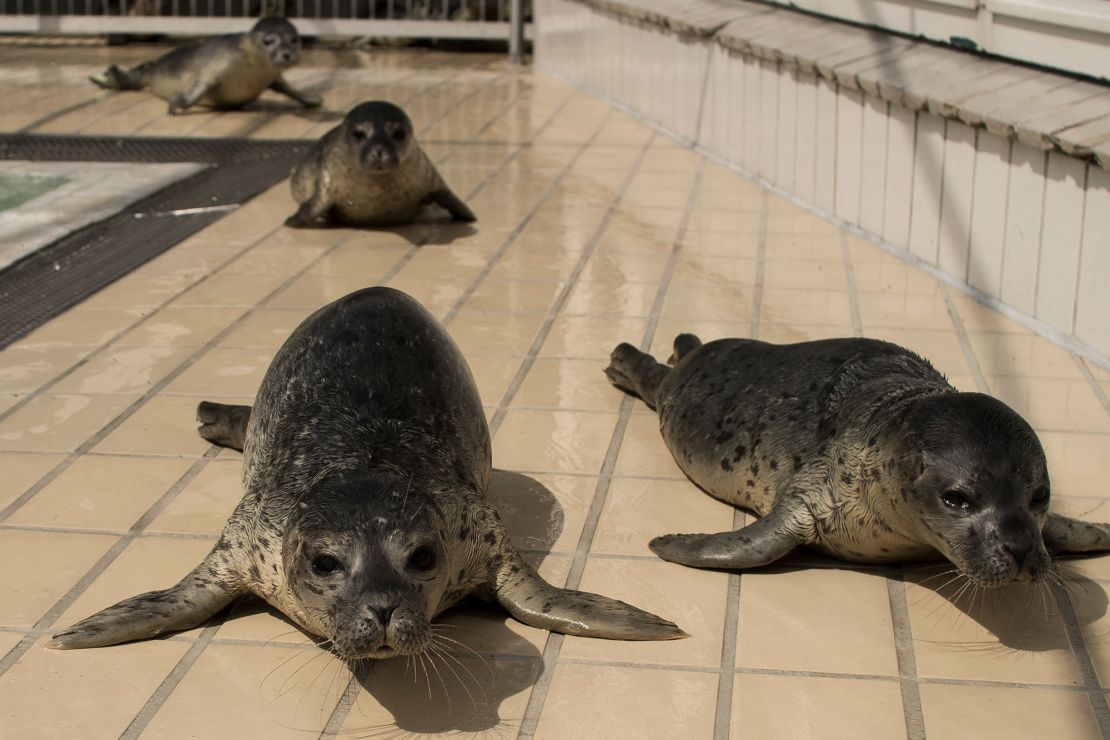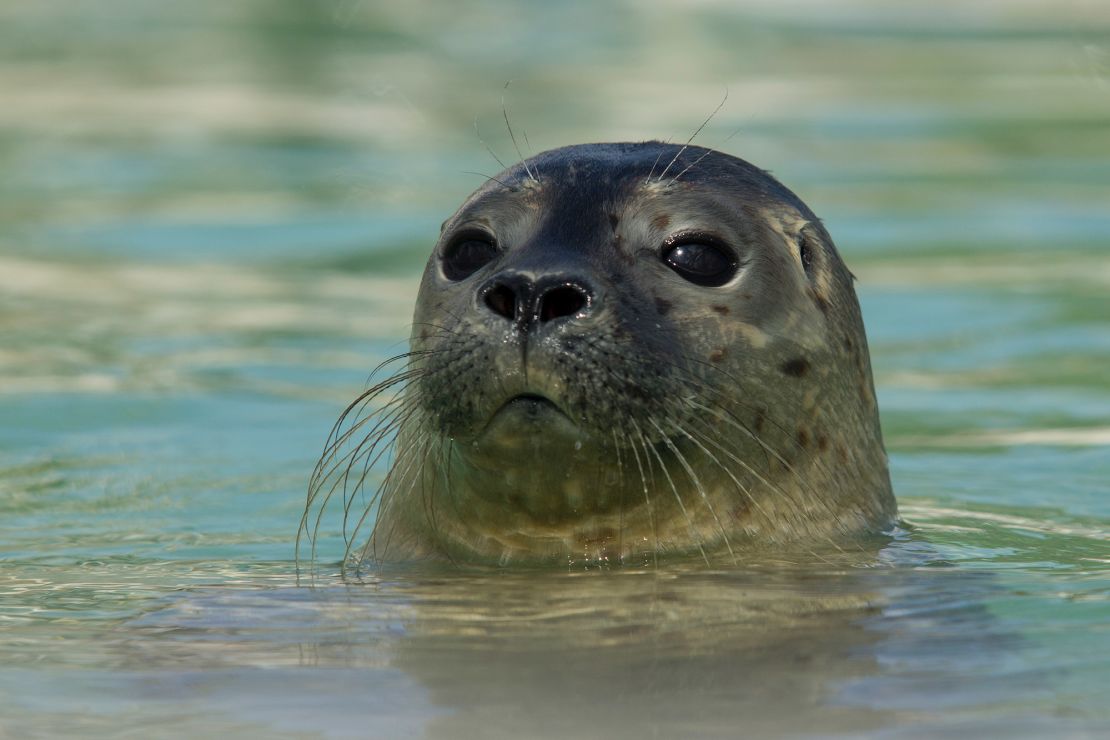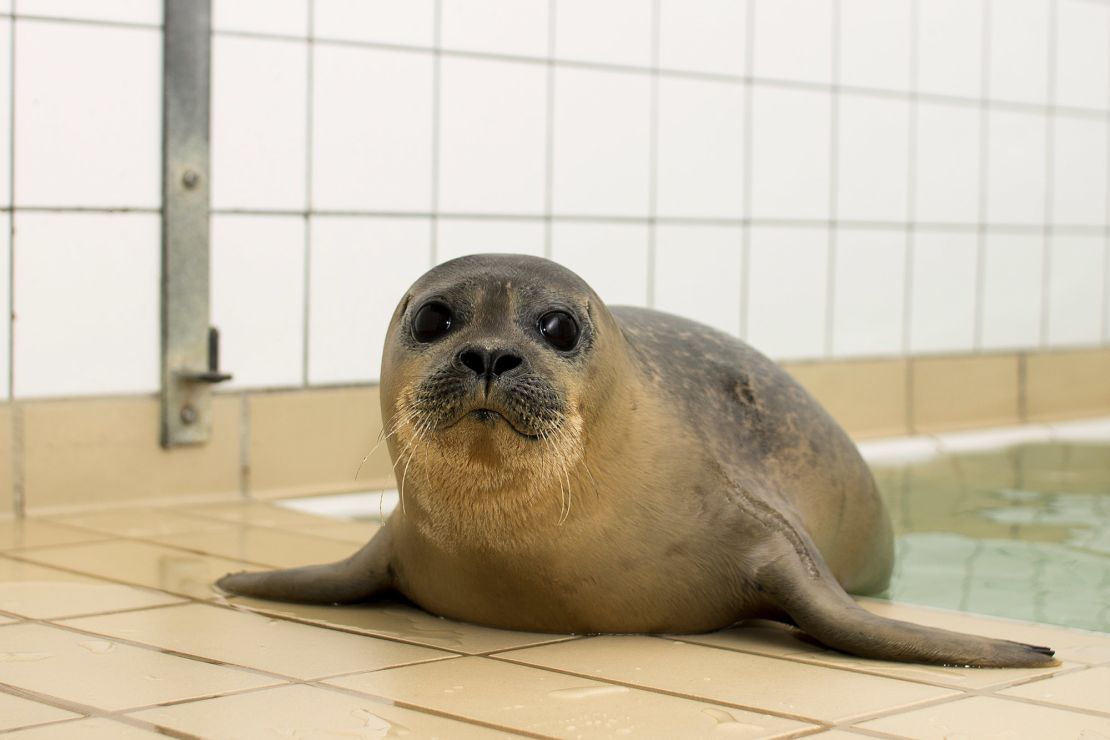Besides being an adorable and important part of marine ecosystems, baby seals might have a unusual ability. They can change the pitch of their voices to be better understood, like humans do, a new study found.
A person or animal using this trait is being what’s called “vocally plastic,” or adjusting their vocal signals in response to environmental changes that overlap or cover up their voices, according to the study published Monday in the journal Philosophical Transactions of The Royal Society B. Being able to clearly and accurately communicate is important for mating opportunities, escaping from predators and social learning, the authors wrote.
The researchers had a number of reasons for wanting to test the vocal chops of baby harbor seals. The rare ability to imitate new sounds – vocal learning – had been seen previously among adult harbor seals and a few other mammal species, according to the authors. And very few mammals have the capacity to change their vocal pitch to sound higher or lower, which is critical for human communication.

“By looking at one of the few other mammals who may be capable of learning sounds, we can better understand how we, humans, acquire speech, and ultimately why we are such chatty animals,” said Andrea Ravignani, the study’s senior investigator and a research group leader in the comparative bioacoustics department at the Max Planck Institute for Psycholinguistics, in a statement.
Pinnipeds – animals such as seals and walruses that belong to the order Pinnipedia – are great models for vocal learning since they’re closer than other species to humans in terms of evolutionary development and diversification, the authors wrote.
After recording wind sounds and other ambient noises on a sandbank in the Wadden Sea – located among Denmark, Germany and the Netherlands – the researchers used computer software to filter the recorded audio to a frequency that would overlap with the formant range of seal pups’ mother attraction calls. “Formant” is a characteristic component of the quality of a speech sound.
The authors then tested eight wild-born, healthy and unrelated harbor seals that were between 1 and 3 weeks old and from the Seal Rehabilitation and Research Centre in the Netherlands. This center ultimately releases seals back into the wild.

As the seals heard a speaker play a 45-minute recording consisting of high noise, low noise or no playback over several days, they spontaneously called out. When the pups heard louder sea noises, they lowered their vocal pitch. During more intense noise levels, the pups used a steadier pitch – and one seal raised its voice. This behavior, called the Lombard effect, is typical for human speech when people talk louder to be more understandable, the authors said.
The seals might have lowered their pitch since lower-frequency sounds travel farther in windy environments like the one projected by the recorded audio, said Caroline Casey, a research scientist and adjunct professor at the University of California, Santa Cruz’s Institute of Marine Sciences and ocean sciences department. Casey independently peer-reviewed the study but wasn’t involved in the research.
“Or (the lower pitch) could help retain the pups’ identities since the fundamental frequency is a characteristic that’s strongly related to the identity and size of that pup,” she added. In this context, fundamental frequency describes an animal’s vocal frequency range dependent on the speed, size and use of its vocal cords.

The findings showed that “seal pups have a more advanced control over their vocalisations than assumed up until now,” Ravignani said in a statement. “This control seems to be already present at only (a) few weeks of age. This is astonishing, as few other mammals seem capable of that.”
Previously, humans were thought to be the only mammals with direct neural connections between the cortex – the outer layer of the brain – and the larynx, which we use to produce vocal tone, he added. “These results show that seals may be the most promising species to find these direct connections, and unravel the mystery of speech.”
In studying which neural networks or social conditions need to be in place for language to evolve, birds have been the best animals to compare ourselves to, Casey said. That’s because during studies on environment and vocal learning or plasticity, birds – unlike most mammals – can be raised in captivity and naturally mature faster due to their short lifespans.
“However, there’s a lot of differences, especially with respect to sociology and life history between humans and birds,” she added. “We’re always looking for mammals that would be good models for the study of vocal learning.”
There haven’t been many studies on how plastic young animals’ calls can be. With “most studies, especially in the wild, you don’t actually know the age or sex sometimes of the animals that you’re recording, so it’s very difficult to get high-quality recordings of animals from different age classes,” Casey added. “Being able to look at that in this really young age group is very unique.”
Future research, the authors wrote, could further explore what other factors might be important for harbor seals’ vocal plasticity.


